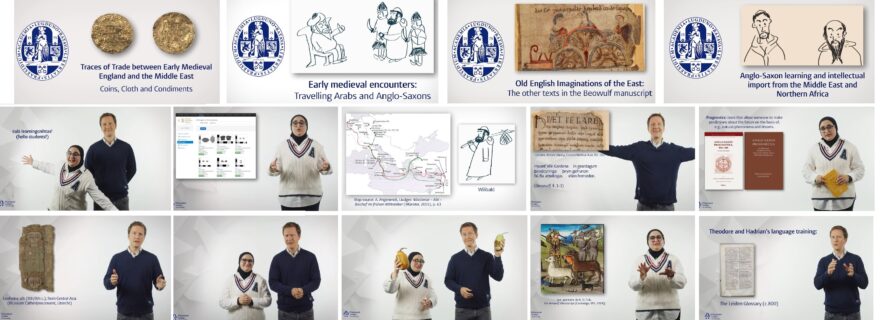YouTube series on the 'East' and the 'West' in the Early Middle Ages: Behind the Scenes
How do you go about making a YouTube series on cultural contacts between early medieval England, Northern Africa and the Middle East? Fatima al Moufridji shares her behind-the-scenes experiences.
An Anglo-Saxon coin with Arabic inscription
During her lectures on the Old English language and culture of the early Middle Ages, Fatima al Moufridji became captivated by a special coin: a gold coin bearing the name of an 8th-century king “Offa Rex” (Offa of Mercia; 757-796) and an inscription in Arabic, part of the shahadah, the Islamic confession of faith. A remarkable combination, especially if you think that the ‘Dark Ages’ mainly featured isolated mono-cultural societies and/or violence between Christians and Muslims during the Crusades. This coin disproves that stereotypical image and aFatimawas curious whether she could find more examples of cultural contact between ‘the West’ and ‘the East’. Together with her Old English lecturer, Thijs Porck, she wrote a research proposal for the Justice, Equity, Diversity and Inclusion (JEDI) initiative of the Faculty of Humanities. The project was assigned and, in collaboration with Thomas Vorisek of the Educational Center Online Learning (ECOLe), four knowledge clips were made. These videos appeared on YouTube last month. In this blog post she shares some of her behind-the-scenes experiences.
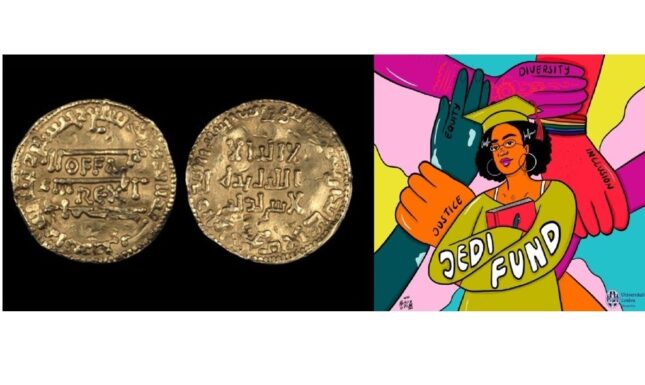

Can you tell us something about the writing process - how did this go?
Fatima: "We made scripts and storyboards for four videos. We divided the labour equally: I would write a script and Dr. Porck would add his comments, and vice versa. That way we got input from both sides and we could each correct each other, whether it was facts, language correction or stupid jokes and puns. We decided early on that, whilst this is a serious topic, we wanted to approach this with some humour, because that would fit with our personalities and make the videos accessible for pretty much everyone. Our humour is quite comparable, we like memes and 'dad jokes' and we made sure to have at least one bad pun in every video (followed by a high five); we also used props and our best prop (and joke) must be the one at the end of the third video (so make sure to watch it until the very end!).
We also decided that we would let the sources speak for themselves, rather than take a highly theoretical approach. We selected sources (texts, objects and individuals) that highlight cultural connections between early medieval England, Northern Africa and the Middle East (where I am from), including medieval texts in Old English and Arabic, archaeological finds (coins, silk) and the inspiring stories of long-distance travelers. Once we were satisfied with the scripts and storyboards, we sent them over to Thomas Vorisek who helped us move from script and storyboard to educational videos."
How did the recording process go?
Fatima: “Recording the videos was a lot of fun! Luckily we had an autocue that helped us a lot especially with the medieval texts that we had to read out in old English, Arabic and Latin. Interestingly, my biggest struggle was that I somehow was completely unable to pronounce some Modern English words, including “ecclesiastical” and "peninsula" (which is awkward since I am from the Arabian peninsula!). There was also no real plan for me to read some Old English bits, but during the recording we decided that it might be a nice touch to the videos.
Something else that happened spontaneously was the Tik-Tok-like dance that starts off each one of our videos, where you can see us moving in unison. This was unplanned on Dr. Porck's side; during the recording, I found his hand gestures quite predictable and so it started out as me subtly copying Dr. Porck’s hand gestures. Thomas – our wonderful video director – thought it was brilliant and funny, so he asked us to do it together for a second take, and we kept that take!”
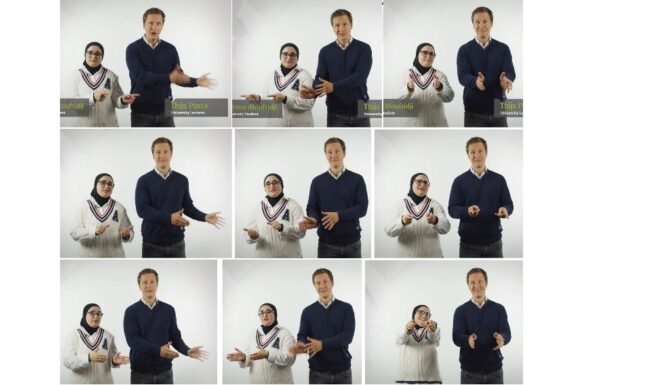

Which aspect of making the videos did you find most challenging? And which one most rewarding?
I found it hard what to include and what not to include, since there was so much to talk about. Originally, we intended to make a max of 8 min videos, but that appeared to be impossible and so settled for around 10-15 min with all the content we had. I think the most rewarding aspect of making the videos was filming itself, seeing everything come together so perfectly, while having fun actually recording them all! Dr. Porck and I have very similar energy levels, so seeing us being able to work together so well was very rewarding, and dare I say very inspirational for myself, as I aspire to become an Old English professor some day! What I also liked is how we were helped by various people: Leiden PhD-student Amos van Baalen gave his voice to the Anglo-Saxon monk Bede in our first video and another PhD-student from Leiden, Song Tan, gave us some great tips on finding information about exotic spices in early medieval letters. Thomas Vorisek was the biggest help of all: he put us at ease during the recordings, understood our attempts at humour and brought it all together in the editing room!
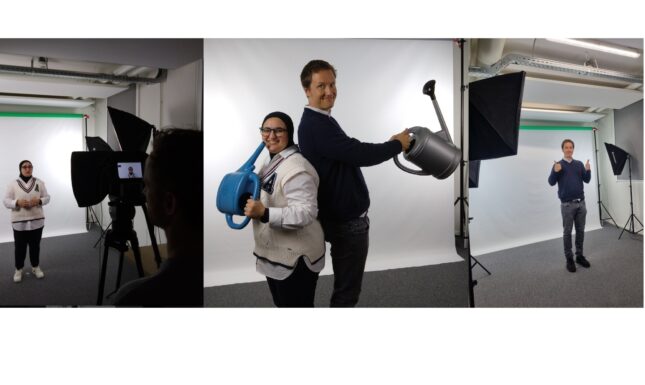

What do you hope that viewers will get out of these videos?
Fatima: "The first thing you might think about when you think of early medieval England is that it is an isolated place, separated from the rest of the world. We hope to change that mindset with these videos! When it comes to the supposedly "Dark Ages," there are a lot of unanswered questions, but one aspect that is especially understudied is the intercultural interactions of early Medieval England with the rest of the world. Also – we hope to possibly highlight that there was much more influence and contact between England and the “East” than one might imagine. Furthermore, we wanted to use the video format to allow the general public access these facts so that anyone who is interested may conduct their own research and light a little spark within them."
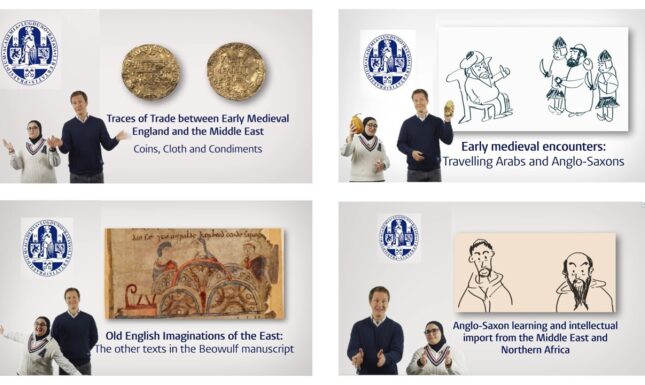
What are some tips you would give people who want to make educational videos about the early Middle Ages?
1. Make the context as light and uncomplicated as you can so that everyone may enjoy it.
2. Remember who your audience is. What specifically do you want viewers to learn from your videos, and what are you attempting to convince them of?
3. Perhaps to some degree make it engaging! We made an effort to use humor to draw people in, but there are other effective strategies as well (such as asking questions that directly address the viewer, etc.). Additionally, don't be scared to incorporate a little piece of yourself into the videos!
4. Structure, structure, structure! Make sure that every video has a similar build-up and start your video with an outline so that folks know what to expect.
5. Dr. Porck would say that consistency is very important; I learned that the hard the way through my BA thesis writing, where he would consistently point out any inconsistencies he would find in my thesis (even mocking me with memes - you can see some of his JEDI-inspired memes in the 'Carousel' below!). So in the videos, we tried to be consistent in every aspect, from the use of quotations and images to the role division (with myself being the one delivering all the puns).
What are some tips you would give other students who want to embark on a project like this?
Fatima: "Bring your strengths to the table and be honest about them. At first, I didn’t personally believe in myself that I would be able to tackle Arabic texts and find something, but I definitely did (even more than we included)! Therefore, if you want to embark on project like this, I say do them with full confidence in yourself, you never know what you could discover."
If you are interested in these videos, please have a look at this YouTube playlist!
© Fatima al Moufridji and Leiden Medievalists Blog, 2024. Unauthorised use and/or duplication of this material without express and written permission from this site’s author and/or owner is strictly prohibited. Excerpts and links may be used, provided that full and clear credit is given to Fatima al Moufridji and Leiden Medievalists Blog with appropriate and specific direction to the original content.


